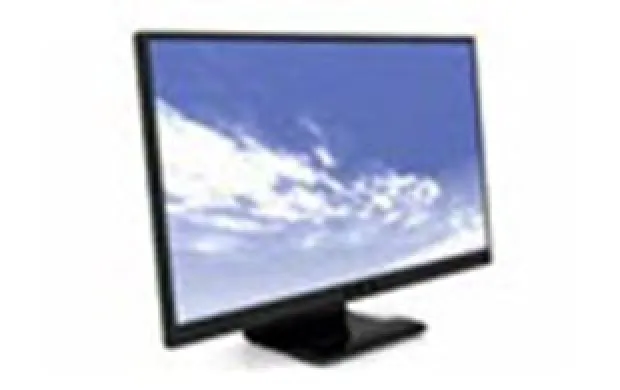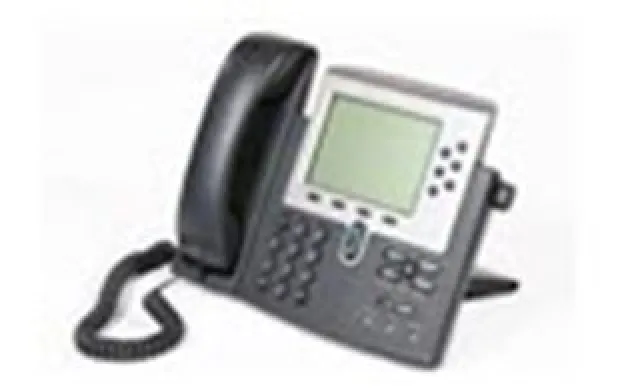Computers
For PartnersWhy ENERGY STAR?
ENERGY STAR makes it easy to find an energy-saving computer to meet your needs. Using the ENERGY STAR product finder, you can select from hundreds of certified efficient computers from the best, most trusted, and most popular brands -- like Apple, Dell, HP, Lenovo and others. In addition, you can filter the list of models by specific attributes such as:
- Form factor (e.g., desktop, notebook, two-in-one notebook, tablet, etc.)
- Processor speed
- Memory
- Networking features
Computers come in a wide range of forms and functions – from lightweight tablets to that old office workhorse, the desktop computer. However, the boundaries continue to blur. You can buy a new desktop computer almost as small and inconspicuous as a laptop or find a laptop that’s just as powerful as desktop. There are laptops designed to be used like tablets and all-in-one desktops without a separate monitor. See our buying guidance for help navigating all the options and select the right model for your situation.
Regardless of the form and function you seek, be sure to look for computers that have earned the ENERGY STAR label to save energy and help protect the climate. They are third-party certified to be energy efficient and use 25% - 40% less than conventional models by using the most efficient components and better managing energy use when idle.

Rebate Finder
Our partners sponsor rebates on certified products.
Computer Types1
The first step is to decide the type of computer you will need. In the table below, a basic overview of the pros and cons of desktops, laptops, netbooks and tablets is provided.
| Pros | Cons | Options |
|---|---|---|
| Desktops deliver more performance for the money than laptops and are less costly to repair. They allow for a more ergonomically correct work environment, let you work on a larger screen, and typically come with better speakers. Desktops are available in various styles and configurations, all designed to appeal to different tastes--and uses. | With the exception of all-in-one or compact computers, most take up a lot of space, even with a thin monitor. | All-in-one. These more-expensive computers incorporate all components, including the monitor, in one case. With components tightly packed behind and underneath the display, they can be difficult to upgrade or repair. Compact. Half the size of full-sized desktops and ideal for small spaces, they can also be more difficult to upgrade and repair. Full-sized. Requiring more room under or on top of your desk, full-sized desktops are the least expensive and the easiest to upgrade and repair and offer the most features and options. Gaming. Gaming systems offer the fastest processors, the most sophisticated graphics cards, multiple large hard drives, and lots of RAM. Cases are usually large and offer room for expansion. |
| Pros | Cons | Options |
|---|---|---|
| Laptops can travel. They can do most things desktops can do, and they take up less desk space. They're easily stowed after use. | Laptops cost more than comparably equipped desktops, and they are more expensive to repair. | 11- to 13-inch. For those working on the road and carrying the laptop often, these models are probably the right choice. Although generally not as fast, they come with many of the same features as larger models, including webcams and memory-card readers. Some models shave a few ounces by leaving out the DVD drive. 14- to 16-inch. Offering a balance of performance, portability, and price, these models are a good choice if you take a laptop along less frequently. Easily configured as a desktop replacement, these models can come with graphics processors with dedicated video memory -- making them suitable for gaming. 17-to-18-inch. For an entertainment-oriented desktop replacement, this model delivers better performance, a good-sized screen, and better speakers. It will cost more than a comparable desktop, but it's handy if you have space constraints or will use the computer in multiple areas of your home. Convertibles and Detachables. Windows 8's tablet-like features make convertible laptops a more appealing category. These look like a regular laptop, but the display either pulls out of the keyboard or twists around and lays flat so it can be used like a tablet. |
| Pros | Cons | Options |
|---|---|---|
| Small and light, these multifunction devices have touch screens. Their small size and weight make them highly portable. Battery life can be as long as 12 hours. A wide variety of inexpensive apps is available. | Tablets are not ideal for office productivity tasks, such as those that require a lot of typing. But you can add a keyboard to many. | Lightweight and highly portable, tablets are made to be carried wherever you go. They're multifunctional, serving as Web browser, e-book reader, digital picture viewer, movie viewer, and music player. Most of our top picks are very easy to use, have a display with a wide viewing angle, and can download apps from a market approved by the maker of its operating system. They weigh from just under a pound to about 1.5 pounds and have 7- to 10-inch touch screens. Many have webcams. |
Features to Consider in Buying a Computer2
In addition to energy performance, there are many other important operating and convenience features to consider when shopping for a computer. Please note that the information below is from March 2014 and, although correct in principle, the scale of what is “adequate” or “typical” in terms of the capacity of components may change dramatically in a short time period.
Components
Processor or central processing unit (CPU). The computer’s “brain”, the CPU is responsible for processing information. Performance is the most important factor, and is determined primarily by the number of cores it has and its clock speed. Processors with multiple cores can process more data simultaneously and the number of cores is often times indicated in the processor name. Core 2 Duo has two cores and a Core 2 Quad has four; a Phenom X3 has three cores. However; Core i5 processors have two cores and others have four. Clock speed, measured in gigahertz (GHz), determines how quickly a processor can process information and generally, within a processor family, the higher the clock speed, the faster the processor. Clock speeds typically start at around 1GHz for a mobile processor and can exceed 3GHz for a desktop processor.
Memory. The computer's memory, or RAM, is used to store data temporarily while the computer is on. The more memory a computer has the faster it is, up to a point. Memory is measured in gigabytes (GB). On desktops, 8GB is common; a few laptops include 8GB. For anything other than heavy multitasking or video editing, 4GB is plenty. Netbooks often come with 1GB of memory, which is adequate.
Graphics adapter and graphics memory. Also known as the video card, GPU, or graphics card, this component is responsible for drawing what you see on your screen. The two types of graphics adapters are integrated (where GPU is part of the actual CPU) and discrete (where the GPU is built onto a separate card installed into the PC). The vast majority of computers sold have integrated graphics, which in some cases can be slower than discrete GPUs. However, some new processors integrate discrete-class graphics. Integrated graphics do use up part of your system's memory, so make sure you have at least 6GB of memory in your computer. If you choose a system with discrete graphics, look for at least 256MB of graphics memory. Gamers should get 512MB or more.
Hard drive. Also known as a hard disk, this is where your programs, documents, music, photos, and videos are stored. Hard drive sizes are measured in gigabytes and terabytes, and commonly range from 250GB to more than 1TB (terabyte). Though size matters, speed is equally important. Speed is measured in rpm (revolutions per minute). A slow hard drive will take longer to start up the OS and programs, and complete tasks (such as installing programs or scanning your hard drive for viruses). Get a desktop with at least a 7,200rpm hard drive and a laptop with a 5,400rpm hard drive. Some high-end desktops and laptops can be configured with a RAID (redundant array of independent disks) setup. These computers have two or more hard drives. There are several types of RAID, the most common being RAID 0 and RAID 1. RAID 0 distributes your data across multiple hard disks, which can greatly improve speed. But if one fails, you'll lose data on all your drives. RAID 1 automatically copies data from one drive to the other. If one crashes, all your data will be safe on the other. Solid-state drives (SSDs) don't have the spinning disk of a conventional hard drive, so they use less power, work quieter, and should be more resistant to damage from rugged use, and promise quicker access to data. However, they cost more than conventional hard drives. Lower-priced hybrid drives, which combine a hard drive with solid-state memory, represent a good compromise.
Optical drive. Standard gear on today's computers, these devices read and write to CDs, DVDs, and Blu-ray discs. Recordable CDs (CD-R) can hold up to 700MB of data. Recordable DVDs (DVD+R, DVD-R, or DVDRAM) can hold up to 4.7GB (single layer) or 8.5GB (dual layer) of data. Blu-ray Disc (BD) drives are the newest standard and capable of playing Blu-ray movies and can store 25GB (single layer) or 50GB (dual layer) of data, respectively.
Ports. The ports to look for include USB (including the new USB 3.0), FireWire, Ethernet, eSATA, and S-video or HDMI. USB ports let you connect a variety of add-on devices, such as digital cameras or external hard drives, as well as flash drives for copying files to and from the hard drive. Having these ports at the front of the case makes connecting devices more convenient. An Ethernet port or wireless network card lets you link several computers in the household to share files, a printer, or a broadband Internet connection. FireWire or IEEE 1394 ports are used to capture video from digital camcorders and connect to other peripheral devices.
New Feature on Computers
Touch screens. Touchscreens have been available on all-in-one computers for some time. But with Windows 8's emphasis on touch, laptops are also getting touchscreens. A touchscreen is not required to take advantage of Windows 8, although it does add to the experience.
Enhanced touchpads. Most Windows 8 laptops also have enhanced touchpads, which add multi-touch gestures especially geared toward the new operating system. Having an enhanced touchpad on your laptop somewhat makes up for the lack of a touchscreen.
Log-on security. A growing number of laptops include fingerprint scanners and face-recognition technology as a convenient alternative to typing a password when logging in. Some laptop manufacturers, are now incorporating face-recognition technology.
Be sure to look for the ENERGY STAR when shopping for a computer
Current Specification Effective Date: October 15, 2020
The ENERGY STAR certified computer product criteria require that computers operate efficiently in multiple modes of operation (such as Off, Sleep, and Idle), utilize efficient power management features, and utilize energy efficient power supplies.
The ENERGY STAR performance specification covers desktops, integrated desktops, notebooks, slate/tablets, portable all-in-ones, thin clients, and workstations, tailoring the criteria to each product type. It provides a base allowance per product type, which limits the amount of energy the product can consume and then adds allowances for features that increase energy demand. In addition, the specification sets requirements for power management. These are set so that the display will go to sleep within 15 minutes of user inactivity and the system will go to sleep within 30 minutes of user activity.
For a complete description of the specification, please go to Computer Version 8.0 Program Requirements (PDF, 793 KB).
Learn How a Product Earns the Label
[1] https://www.consumerreports.org/electronics-computers/computers/buying-guide/
[2] https://www.consumerreports.org/electronics-computers/computers/buying-guide/
Lightweight and highly portable, tablets are made to be carried wherever you go. They're multifunctional, serving as Web browser, e-book reader, digital picture viewer, movie viewer, and music player. Most of our top picks are very easy to use, have a display with a wide viewing angle, and can download apps from a market approved by the maker of its operating system. They weigh from just under a pound to about 1.5 pounds and have 7- to 10-inch touch screens. Many have webcams.
To save energy with your computer, please be aware of the following:
- Sleep Settings: Set your computer to enter a low power sleep mode when the computer is inactive. Enabling your ENERGY STAR certified desktop computer's power management features can save your office or home office $15 per year.
- Screen Savers: Despite common belief, a screen saver does not save energy. In fact, more often than not, a screen saver will not only draw power for the monitor but certain types will also keep the CPU from shutting down.
- Games: Many popular computer games left running in the background while multitasking, will not allow the computer to go to sleep - even if the game is paused.
RELATED PRODUCTS
Join Mailing List
Sign up for newsletters from ENERGY STAR to help you save money and energy at home.




